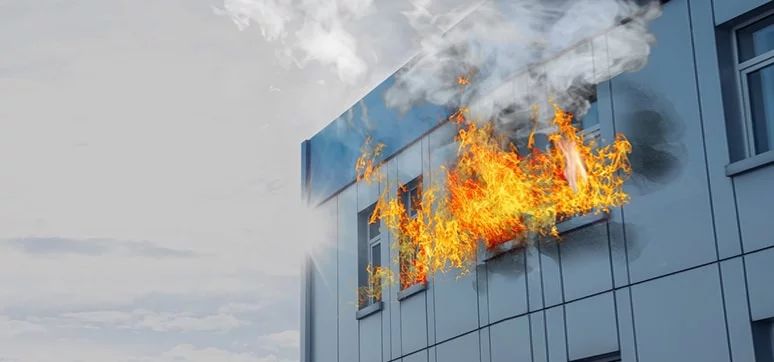Modern buildings are marvels of design and engineering. They’re built to stand strong against natural disasters, house thousands of people, and remain functional for decades. But one often-overlooked aspect of building safety deserves more attention: structural fire protection, or as it’s called in German, baulicher Brandschutz. This is the quiet yet critical system that helps keep people safe and buildings intact during a fire.
What Exactly is Structural Fire Protection?
Think of baulicher brandschutz as the hidden armor of a building. Unlike active systems like sprinklers or alarms, structural fire protection is embedded into the very foundation and design of a structure. It’s all about using smart materials and methods to ensure the building can withstand the intense heat and pressure of a fire.
The Core Elements of Structural Fire Protection:
- Fire-Resistant Materials: Materials like concrete, steel, and gypsum are either treated or inherently designed to handle extreme heat.
- Protective Coatings: Special treatments like fireproof sprays or intumescent paint expand under heat, forming a barrier to slow the fire’s spread.
- Compartmentation: Fire-resistant walls and floors act as barriers, preventing flames and smoke from quickly moving to other areas.
Why is Baulicher Brandschutz So Important?
Fires can be unpredictable and spread faster than you might think. This is why baulicher brandschutz is indispensable. It plays a crucial role in:
- Saving Lives: Delaying the spread of flames buys valuable time for people to escape safely.
- Preserving Buildings: Reducing the likelihood of structural collapse minimizes long-term damage.
- Legal Compliance: Meeting building safety codes that demand robust structural fire protection measures.
Types of Structural Fire Protection
Structural fire protection is multifaceted, with various approaches tailored to different buildings and risks:
1. Fire-Resistant Structural Elements
These include beams, columns, and floors designed to withstand high temperatures. Reinforced concrete and treated steel are often used, along with fireproof coatings for added protection.
2. Protective Coatings and Insulations
- Intumescent Paint: This expands when exposed to heat, creating a protective layer around key structural elements.
- Spray-Applied Fire-Resistant Materials (SFRM): Lightweight coatings that insulate steel and concrete.
3. Fire Barriers and Compartmentation
Fire-rated walls, doors, and floors are essential for containing fires and slowing their spread. They create fire compartments, isolating flames and smoke to give occupants more time to evacuate and firefighters more time to respond.
In high-rise buildings, these barriers prevent fire from spreading through vertical spaces like stairwells and elevator shafts, protecting occupants on other floors. In data centers, fire-rated elements safeguard critical IT infrastructure by containing the damage to specific areas, minimizing downtime and losses.
Their effectiveness relies on proper fire resistance ratings and regular maintenance, making them vital for enhancing safety and resilience in any building.
4. Fire Stopping
Seals fill gaps in walls or floors, blocking smoke and flames from sneaking through small openings.
How Does Structural Fire Protection Work in Modern Buildings?
Today’s architects often balance aesthetics with functionality, making baulicher Brandschutz more critical than ever. Open-concept designs and eco-friendly materials require innovative fire protection solutions, such as:
- High-Rises: Fireproof coatings on steel structures prevent collapse, while compartmentation confines fires to specific floors.
- Industrial Sites: Warehouses and factories with flammable materials depend on extra fireproofing measures for their structural elements.
- Sustainable Buildings: Modern timber and other eco-friendly materials undergo specialized treatments to ensure fire safety.
The Role of Building Codes
Building codes ensure consistency and accountability in fire safety. Without them, there would be no uniform standard for implementing structural fire protection plan. Key guidelines include:
- International Building Code (IBC): Outlining fire resistance for structural components.
- British Standards (BS 476): Testing materials for fire performance.
- NFPA 5000: Providing comprehensive fire safety requirements for construction.
The Future of Structural Fire Protection
Fire protection systems are evolving alongside advancements in construction. Exciting innovations in structural fire protection include:
- Smart Fireproofing Materials: Materials that react to heat changes, offering enhanced safety and efficiency.
- 3D-Printed Fire-Resistant Structures: Combining innovation and safety in modern building designs.
- Performance-Based Fire Protection: Engineers now use simulations to predict fire behavior, tailoring protection to the specific needs of a building.
Final Thoughts
Structural fire protection may not be the most glamorous part of building design, but it’s one of the most important. Incorporating fire-resistant materials, intelligent coatings, and effective compartmentation, engineers and architects can create buildings that are safer for everyone.
As technology continues to evolve, the future of structural fire protection looks promising. Whether it’s through smarter materials or innovative construction techniques, the goal remains the same: to protect lives and property without compromising on design or sustainability.












